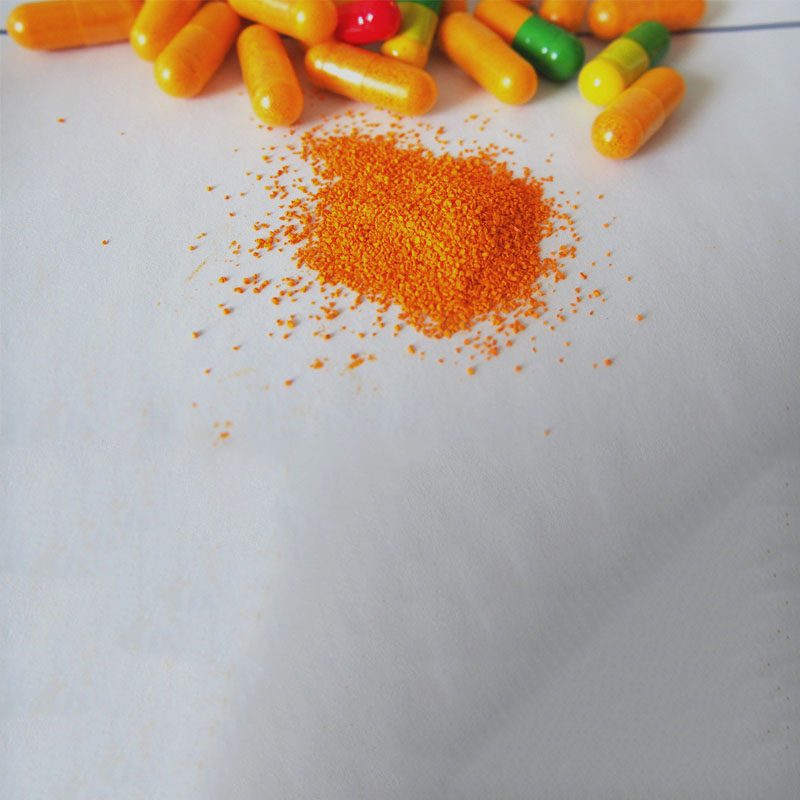- No. 268 Xianghe Street, Economic Development Zone of Xingtai city, Hebei 054001 China
- Byron@hbhongri.cn
Looking for Pure Turmeric Extract—95% Curcumin, Organic?
Turmeric extract & Curcumin: A Buyer’s Field Guide From Lab Bench to Loading Dock
If you’ve been sourcing botanicals for a while, you’ve watched turmeric go from spice aisle to serious industrial ingredient. For teams comparing colorants and actives, pure turmeric extract is now a mainstream choice across supplements, beverages, and even cosmetics. And yes, I’ve seen plenty of projects where curcumin quietly replaced synthetic yellows without drama—surprisingly smooth when the spec is tight.

Industry Trends (short version)
- Natural color pivot: formulators are replacing Tartrazine with curcumin (E100) in RTD drinks, gummies, and dairy alternates.
- Clean-label audits: auditors expect documented solvent controls, pesticide panels, and metals per USP/ICH—non-negotiable now.
- Dispersion tech: nano/micro-emulsified pure turmeric extract keeps color stable in low pH beverages; real-world use may vary with processing shear.
What It Is (and what it isn’t)
Curcumin is the principal curcuminoid of Curcuma longa (Zingiberaceae). It’s used as a herbal supplement ingredient, a cosmetics colorant, a food flavoring, and a natural color (E100). Not a magic bullet; it needs smart formulation for light, pH, and oxidation exposure.

Product Specifications (typical commercial lot)
| Parameter | Typical Spec | Method/Standard |
|---|---|---|
| Total Curcuminoids | ≥ 95% | HPLC; USP/Ph.Eur style assay |
| Curcumin I | ≈ 70–80% | HPLC |
| Moisture | ≤ 5.0% | Loss on drying |
| Particle Size | 80–200 mesh | Sieve analysis |
| Residual Solvents | Ethanol ≤ 5000 ppm | USP <467> |
| Heavy Metals | Pb < 2 ppm; As < 1 ppm; Cd < 1 ppm; Hg < 0.1 ppm | ICP-MS; USP <232>/ICH Q3D |
| Microbiology | TPC ≤ 10⁴ CFU/g; Yeast/Mold ≤ 10³; Salmonella/E.coli absent | ISO 4833 / ISO 6579 |
| Color Use | E100 (food coloring), real-world pH 3–7 | EFSA/JECFA guidance |
Process Flow (how it’s actually made)
Materials: dried Curcuma longa rhizomes from contracted farms (traceable to No. 268 Xianghe Street, Economic Development Zone of Xingtai city, Hebei 054001 China).
Methods: milling → food-grade solvent extraction (typically ethanol; supercritical CO₂ optional) → concentration → crystallization → filtration → vacuum drying → milling and sieving → blending (to spec) → packaging under nitrogen.
QC & testing: HPLC assay, solvent residue per USP <467>, ICP-MS metals, pesticide multi-residue per EU 396/2005, micro limits (ISO).
Service life: 24–36 months in sealed, light-protected container111s at 15–25°C; avoid high humidity and UV.

Application Scenarios
- Supplements: tablets, capsules, gummies (often with piperine or emulsified systems).
- Food & beverage: juices, sports drinks, plant-based dairy, bakery, sauces, confections; as E100 colorant and flavor note.
- Cosmetics: soaps, masks, creams for a warm hue (stability testing is key).
- Pet nutrition: treats and toppers (labeling rules vary by market).
Why buyers pick it
Advantages: bright natural yellow, well-defined specs, global regulatory familiarity, scalable supply. Limitations: light/pH sensitivity, need for dispersion systems in clear beverages. Many customers say they solved ring-staining with better emulsifiers and opaque bottles—simple, but it works.

Vendor Comparison (snapshot)
| Vendor | Origin | Curcuminoids | Certs | Lead Time / MOQ | Customization |
|---|---|---|---|---|---|
| Hongri Spice (Turmeric extract & Curcumin) | Hebei, China | 95% standard; 50–98% on request | ISO22000, HACCP, Halal, Kosher | 10–15 days; MOQ 25 kg | Mesh size, solvent, dispersion grade |
| Trader A | Multi-origin | 90–95% | HACCP | 3–5 weeks; MOQ 50 kg | Limited (stock grades) |
| EU Extractor B | EU | 95%+ | FSSC 22000, Organic | 2–4 weeks; MOQ 10 kg | Flavor-masked, water-dispersible |
Customization & Packaging
- Assay: 50%, 65%, 95–98% curated for cost or potency.
- Formats: powder, granule, or emulsified dispersion (beverage grade).
- Solvents: ethanol preferred; acetone-free programs available.
- Packs: 1–5 kg foil bags in 25 kg fiber drums; nitrogen flushed.
Mini Case Studies
- APAC beverage brand: switched to 95% pure turmeric extract in a nano-emulsion (d90 ≈ 180 nm). Result: clear lemon drink, color stable 12 weeks at 25°C, pH 3.2; no ring formation in PET under shelf-light (internal data).
- EU gummy maker: used 65% grade for cost control; met E100 target with 20% lower inclusion vs. paprika blend; panel noted “warm citrus” hue, zero off-notes after 6 months.
Compliance & Notes
Label as turmeric extract/curcumin or E100 where applicable. Follow ADI guidance (0–3 mg/kg bw/day for curcumin) and run your own stability trials. As always, no disease claims—keep it clean-label and defensible.
Customer Feedback (short)
“Color was stronger than our old batch; HPLC matched COA.” — Technical buyer, beverage
“Tighter mesh solved tablet speckling.” — QA lead, nutraceuticals
References
- EFSA Panel on Food Additives: Scientific opinion on Curcumin (E100), stability and ADI.
- JECFA: Curcumin evaluation; ADI 0–3 mg/kg bw.
- USP/Herbal Medicines Compendium: Curcuma longa/Curcuminoids monographs; USP <232>, <233>, <467>.
- ISO 5566: Turmeric (Curcuma longa) — Specification; ISO 6579 and ISO 4833 microbiology.
- EU Regulation (EC) No 396/2005: pesticide MRLs for plant materials.
-
Capsicum frutescens oleoresin – High Purity, Food GradeNewsNov.17,2025
-
Capsicum Frutescens Oleoresin – Natural Heat & FlavorNewsNov.17,2025
-
Peppereka Powder – Fresh, Vibrant Color & Sweet AromaNewsNov.17,2025
-
Paprika Oleoresin | Natural Red Color, Heat & Flavor BoostNewsNov.17,2025
-
Pure Turmeric Extract 95% Curcumin | Potent, Lab-TestedNewsNov.17,2025
-
Red Papper Pods – Premium Sun-Dried, Bold Heat & AromaNewsNov.10,2025







